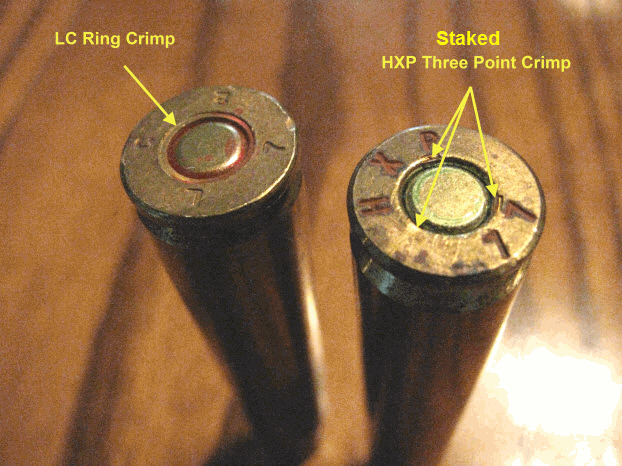Bucksnort1
New member
This morning, I spoke to a representative from Federal. The reason for the call was, how to determine which cases, based on head stamp, have crimped primers. The bottom line is, ALL Federal 223 cases (I did not ask about other calibers) are either crimped or staked. This means the box of 223 you buy at Walmart will have crimped or staked primers. I asked if removing the crimp is necessary for reloading. He said it will make your reloading life a lot easier. Until today, I have been under the impression crimping is done by means of what Federal calls, staking.
According to Federal, staking means the primer is held in place by four equally spaced tabs or stakes around the circumference lip of the primer pocket; whereas, a crimp is continuous and goes around the circumference, at the lip, of the primer pocket.
Also, the small circle indentations (not the circle with the cross) around the case head indicate which piece of equipment was used to produce that case and not which facility produced it.
Yesterday, I experimented with a couple of Federal non-military cases by removing the primers then running a sharp knife edge around the lip of the primer pocket to feel for stakes. I did not detect any stakes and I did nothing else to the primer pocket so I seated a primer without problems. If these cases have crimps, they did not interfere with seating the primer.
Now, I'm wondering if Remington and Winchester stake or crimp their primers.
According to Federal, staking means the primer is held in place by four equally spaced tabs or stakes around the circumference lip of the primer pocket; whereas, a crimp is continuous and goes around the circumference, at the lip, of the primer pocket.
Also, the small circle indentations (not the circle with the cross) around the case head indicate which piece of equipment was used to produce that case and not which facility produced it.
Yesterday, I experimented with a couple of Federal non-military cases by removing the primers then running a sharp knife edge around the lip of the primer pocket to feel for stakes. I did not detect any stakes and I did nothing else to the primer pocket so I seated a primer without problems. If these cases have crimps, they did not interfere with seating the primer.
Now, I'm wondering if Remington and Winchester stake or crimp their primers.
Last edited:

